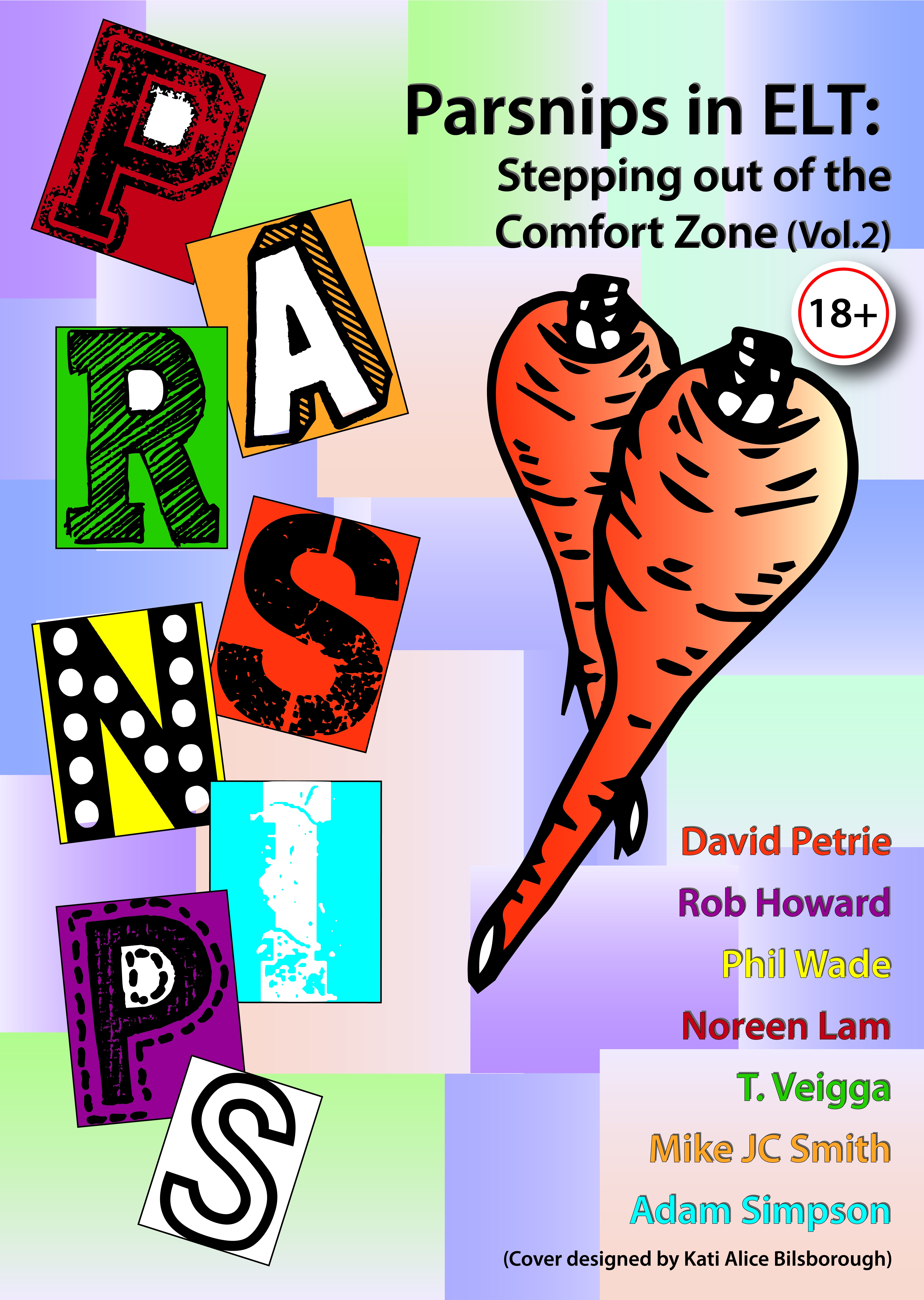by Jason R. Levine
What does it take to become fluent?
The Internet is teeming with suggestions, instructions, and procedures for how to speak fluent English. It’s overwhelming for learners and teachers to try to make sense of it all.
It’s especially difficult to know if the source of information is a person you can trust, someone with extensive knowledge and experience in English language teaching.
To cut through the noise, I asked a number of the world’s leading language learning experts for their opinions. These are people I have been following, collaborating with, and learning from over the course of my 15-year career.
34 of them were kind enough to help me. I asked them to answer the following question in 140 or fewer characters.
“What is the most important thing to achieve English fluency?”
My objectives were (1) to provide direct advice from a diverse group of specialists in the field and (2) to create a short list of recommendations based on the responses I received.
What is English fluency?
Many popular dictionaries begin with this entry: The ability to speak or write a foreign language easily and accurately.
Scott Thornbury, one of our 34 experts, had this to say: “Fluency is an impression a speaker creates, and may only accidentally correlate with accuracy, speech rate, grammatical complexity, etc.”
Interestingly, a number of these same dictionaries offer this as their second entry: The ability to express oneself easily and articulately.
The notion of articulate expression is key, I believe, to the “impression” Scott Thornbury is talking about.
When English learners ask me about fluency, I usually say: Fluent users of English can be easily understood by readers and listeners; and they understand most of what they read and hear.
Now, over to our experts:
“What is the most important thing to achieve English fluency?”
Fluency Tip #1
Andy Boon

“Give students a purpose to speak/write. Help them find the language to break the silence/empty page. Then, build from there.”
Andy teaches at a university in Japan, has a PhD, and writes articles, books and graded readers. Follow Andy on Twitter.
Fluency Tip #2
Barbara Hoskins Sakamoto

“Focus on a bit of language that interests you, practice until you know it, and then use it until you own it.”
Barbara is sometimes a teacher, trainer, or author, but always a learner. Follow Barbara on Twitter.
Fluency Tip #3
Cecilia Lemos

“Let go of self-consciousness; speak as much as you can. We make many mistakes when speaking our L1, but that doesn’t stop us from speaking.”
Cecilia is an English teacher, teacher trainer and materials writer, passionate about what she does. Follow Cecilia on Twitter.
Fluency Tip #4
Chuck Sandy

“Practice builds accuracy. Accuracy builds confidence. Confidence builds fluency.”
Chuck is an author, teacher trainer, and community builder. He’s a cofounder of http://iTDi.pro and curator of the new http://GalleryTeachers.com. Follow Chuck on Twitter.
Fluency Tip #5
David Deubelbeiss

“The language must matter, be important-real and not an exercise. Interact with messages you genuinely want to hear and understand.”
David is a teacher trainer, author, passionate ed.techpreneur, and Director of Education, EnglishCentral. Follow David on Twitter.
Fluency Tip #6
David Dodgson

“Engage with English everywhere-music, books, games, signs, t-shirt slogans – make notes & take it back to class, share, & collaborate!”
David is a language school coordinator, EAL tutor, and teacher trainer based in Gabon. Follow David on Twitter.
Fluency Tip #7
Drew Badger

“Learn like natives and you’ll speak like one.”
Drew is The World’s #1 English Fluency Guide and the co-founder of EnglishAnyone.com. Follow Drew on Twitter.
Fluency Tip #8
Eric Kane

“Learning to communicate in a new language is fun when you collaborate with others. Create a network and celebrate your successes.”
Eric is a teacher, teacher trainer and founder of ELF Learning, a children’s content creator based in Japan. Follow Eric on Twitter.
Fluency Tip #9
Fiona Mauchline

“Willingness to take a leap into the unknown, geographically, personally, linguistically (experiment, make mistakes). Accuracy’s another story.”
Fiona is an ELT writer, ‘itinerant’ teacher trainer and, of course, teacher. She blogs (https://macappella.wordpress.com/) and writes articles for the British Council, IATEFL TDSIG and ELT Magazine. Follow Fiona on Twitter.
Fluency Tip #10
Jack Askew

“Know why you want to reach fluency, set a goal, make a plan, and take consistent action every day.”
Jack helps English learners get on the road to fluency. Follow Jack on Twitter.
Fluency Tip #11
Jason West
“Don’t waste your time, hope and money on a classroom course. Prepare properly and do focused speaking practice with friendly non-teachers.”
Jason is creator of the world’s first social media English course. Follow Jason on Twitter.
Fluency Tip #12
Jennifer Lebedev

“A language learner must commit to a realistic study plan that makes use of quality resources and allows for meaningful practice.”
Jennifer has been teaching English and creating instructional content for nearly 20 years. Follow Jennifer on Twitter.
Fluency Tip #13
Juan Alberto Lopez Uribe

“The #1 thing to achieve fluency is to live language through meaningful and dynamic interactions in a caring, challenging, and interesting environment.”
Juan is a Teacher Educator in the area of affective language learning. Follow Juan on Twitter.
Fluency Tip #14
Ken Beare

“Be patient, make many mistakes, speaking every day for fifteen minutes is better than once or twice a week, use your ear and your brain.”
Kenneth has taught online and off for over 30 years, as well as developing a wide range of interactive English learning materials. Follow Ken on Twitter.
Fluency Tip #15
Kevin Stein

“Fluency requires automaticity which requires familiarity. Practice language you know. Because fluency = confidence to take the next step.”
Kevin is a teacher who believes that learning is something that students and teachers create together through curiosity and respect. Follow Kevin on Twitter.
Fluency Tip #16
Larry Ferlazzo

“Students need to feel safe to make mistakes & realize errors are wonderful learning opportunities and not something to be avoided.”
Larry teaches English Language Learners at Luther Burbank High School in Sacramento, California and writes a weekly post for The New York Times on teaching ELLs. He has written eight books on education issues. Follow Larry on Twitter.
Fluency Tip #17
Luke Meddings

“Fluency isn’t the same as accuracy. Hesitation, reformulation and non-standard grammar are part of everyday English, so relax – it’s normal!”
Luke is an international speaker, award-winning author and teacher trainer; he co-founded Dogme in ELT with Scott Thornbury, started The Round with Lindsay Clandfield and blogs at lukemeddings.com. Follow Luke on Twitter.
Fluency Tip #18
Mau Buchler
“You have to find out what kind of English speaker you are.”
Mau is the creator of http://www.tripppin.com. Follow Mau on Twitter.
Fluency Tip #19
Michael Marzio

“Smartest starting point is intensive listening on very regular basis, with pictures or video providing some semblance of context or meaning.”
Michael started making educational video in the sixties and hasn’t stopped yet. Follow Mike on Twitter.
Fluency Tip #20
Minoo Short
“Fluency is about building reflexes, and reflexes are built by listening to and repeating common collocations and phrases.”
Minoo is the founder of Anglo-Link. Her videos for English learning have been viewed over 40 million times. Follow Minoo on Twitter.
Fluency Tip #21
Nik Peachey

“You need to have a reason to learn that will impact your life.”
Nik is Head of Learning at EnglishUp, an online school for English language learners. Follow Nik on Twitter.
Fluency Tip #22
Paul Maglione

“You can’t learn a language unless you start by maximizing your input. Hearing and seeing leads to understanding, then skills building, and finally proficiency.”
Paul co-founded English Attack in 2009 with the vision of bringing the power of online entertainment to English language learning. Follow Paul on Twitter.
Fluency Tip #23
Philip Shigeo Brown

“Know what kind of fluency you wish to achieve then take decisive steps to move towards your goal, stay motivated, and enjoy getting in flow.”
Philip is a Lifelong learner & Coeditor of “Exploring EFL Fluency in Asia” (Palgrave Macmillan, 2014). Follow Philip on Twitter.
Fluency Tip #24
Rachel Smith
“Repetition!”
Rachel’s How-To videos on English Pronunciation have been viewed over 25 million times. Follow Rachel on Twitter.
Fluency Tip #25
Rob Howard
“Just express yourself! Speak up and say what you feel to make your opinion understood as precisely and easily as possible.”
Rob is the owner of EFLtalks and Online Language Center. Follow Rob on Twitter.
Fluency Tip #26
Scott Thornbury
“Learn some useful sentence starters. Act as if you are fluent, even if you’re not. Use your hands.”
Scott teaches on the MA TESOL at The New School, NY. Follow Scott on Twitter.
Fluency Tip #27
Sean Banville
“Read, listen to, talk or write about things you are really interested in, things you love to read, listen to, etc. in your own language.”
Sean makes the lessons for Breaking News English.com (and 9 other websites). Follow Sean on Twitter.
Fluency Tip #28
Shelly Sanchez Terrell

“We learn language by communicating with others. Connect on the World Wide Web with other language learners!”
Shelly is an author, international speaker, education thought-provoker, elearning specialist and the founder of 30Goals.com. Follow Shelly on Twitter.
Fluency Tip #29
Stephen Krashen
“The only way to develop fluency is to get plenty of compelling comprehensible input. Comprehensible input is the cause: Fluency is the result.”
Stephen is professor emeritus at the University of Southern California. He is a linguist, educational researcher, and activist. Follow Stephen on Twitter.
Fluency Tip #30
Steven Herder
“Data and determination – Decide to focus on your fluency. Record yourself, count words per minute and track your progress – you’ll improve!”
Steven is an EFL teacher in Japan exploring leadership with young college minds. Follow Steven on Twitter.
Fluency Tip #31
Sylvia Guinan

“Learn though multi-media, multi-sensory, hands-on social fun.”
Sylvia is an English teacher, writer and blogger who uses brain-friendly techniques to help students and teachers around the world. Follow Sylvia on Twitter.
Fluency Tip #32
Tyson Seburn
“Involving yourself with the language at every appropriate opportunity helps build awareness and confidence needed for fluency.”
Tyson is the author of Academic Reading Circles (http://bit.ly/round-arc), #tleap founder, and EAP instructor at the University of Toronto. Follow Tyson on Twitter.
Fluency Tip #33
Vicki Hollett
“What’s #1 to achieve fluency? M-O-T-I-V-A-T-I-O-N-!”
Vicki is a teacher, teacher trainer, writer, and video producer at Simple English Videos. Follow Vicki on Twitter.
Fluency Tip #34
Vicky Loras
“In my opinion, fluency comes with repetition and listening to speakers of the L2 all the time around you!”
Vicky is the Co-Founder and owner of the Loras Network, an English school in Switzerland. Follow Vicky on Twitter.
What are the essentials?
By focusing on the important ways these 34 tips converge and overlap, I was able to create my short list of recommendations. I’m calling it “7 Essentials For English Fluency”.

Now, over to you.
As a learner or teacher of English, do any of these tips resonate with your experience? If you have a favorite (or favorites), please share them!
Do you agree with the “7 Essentials For English Fluency”? Would you add to the list? Delete from it? Are any of the suggestions more (or less) important than others? Do you think it’s possible to achieve true consensus on this issue?
I highly value your feedback and hope to stimulate a discussion among learners and teachers alike. Please let me know what you think in the comments below.
Finally, I extend my heartfelt thanks to the 34 specialists for agreeing to contribute to this article. The English language teaching community is a giving and vibrant one, and their participation was further evidence of this. These individuals are doing extraordinary work as teachers, researchers, and writers. I look forward to continuing to draw inspiration from them.























Leave a comment